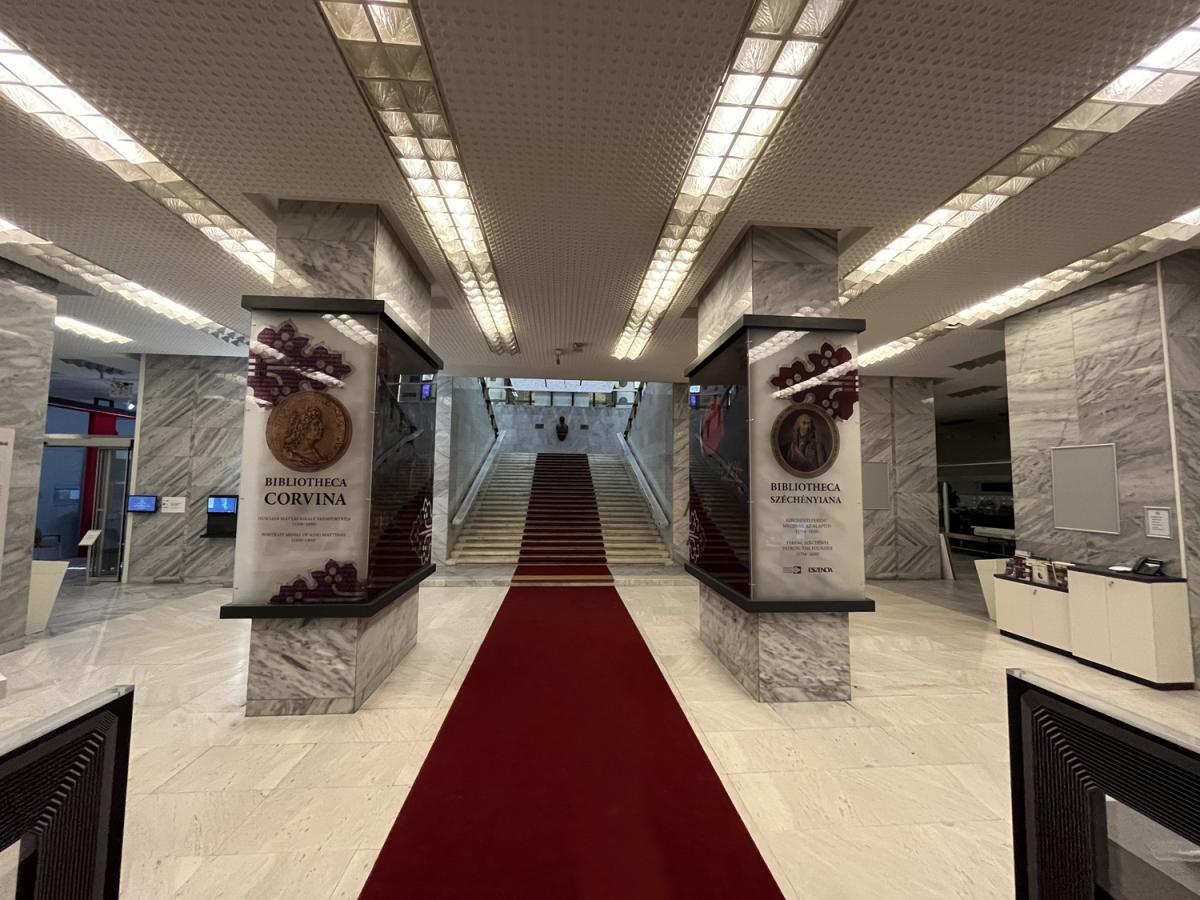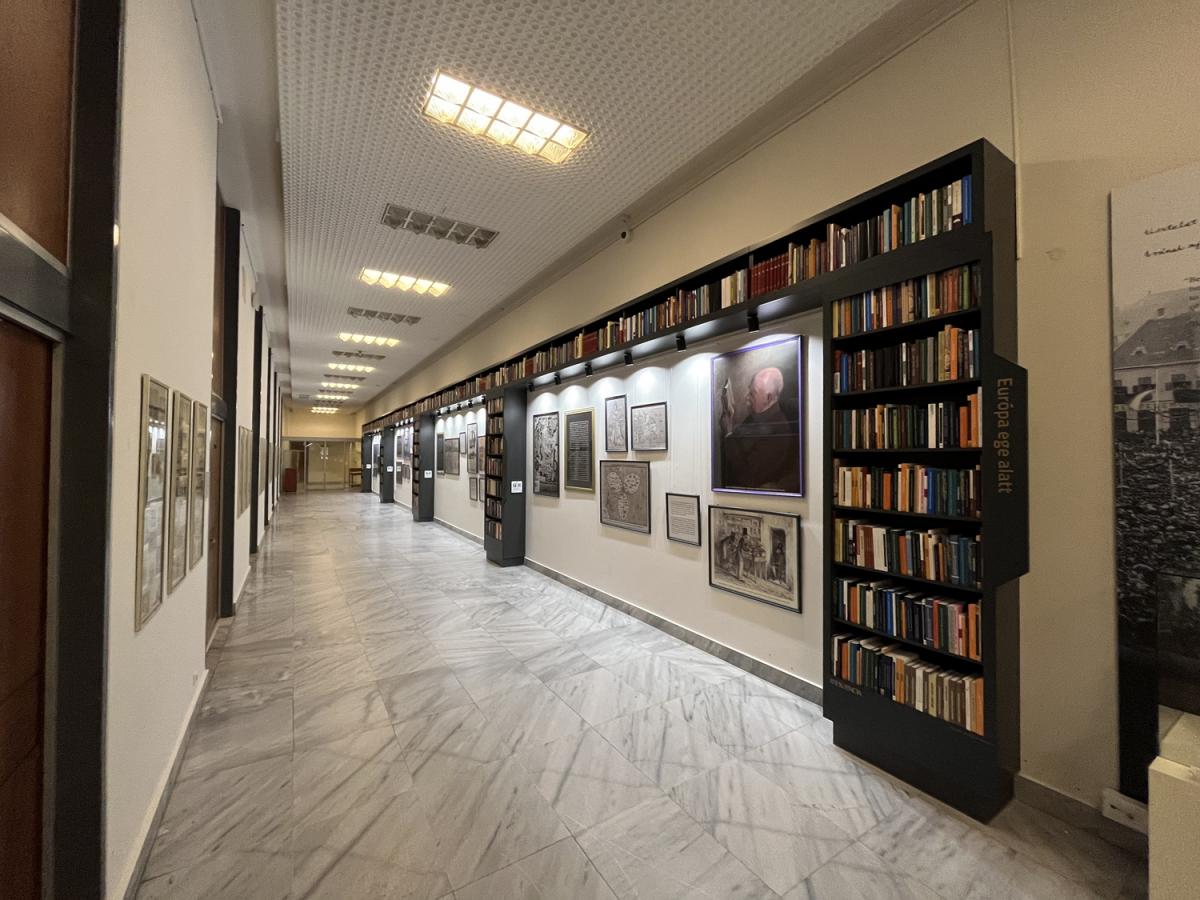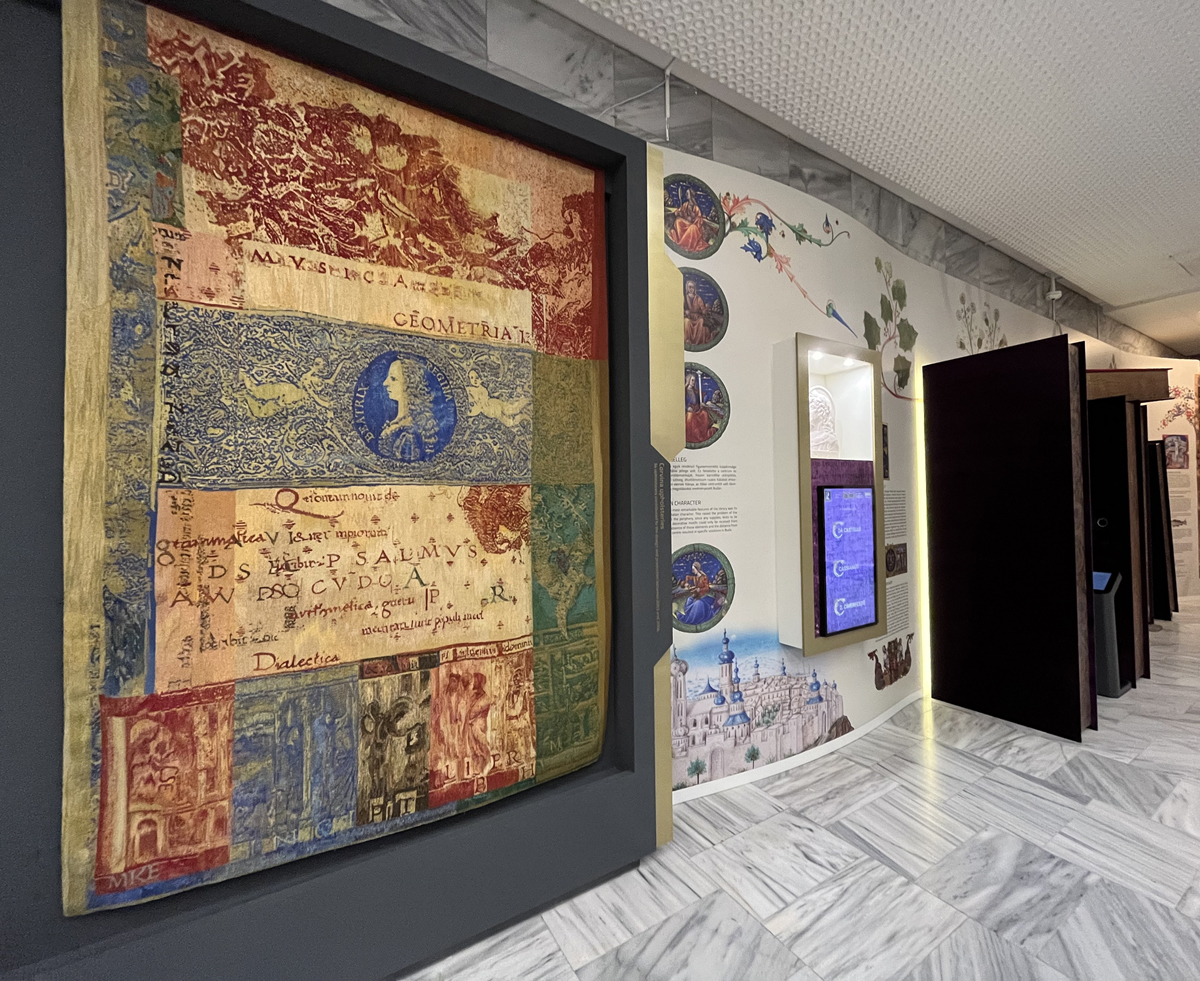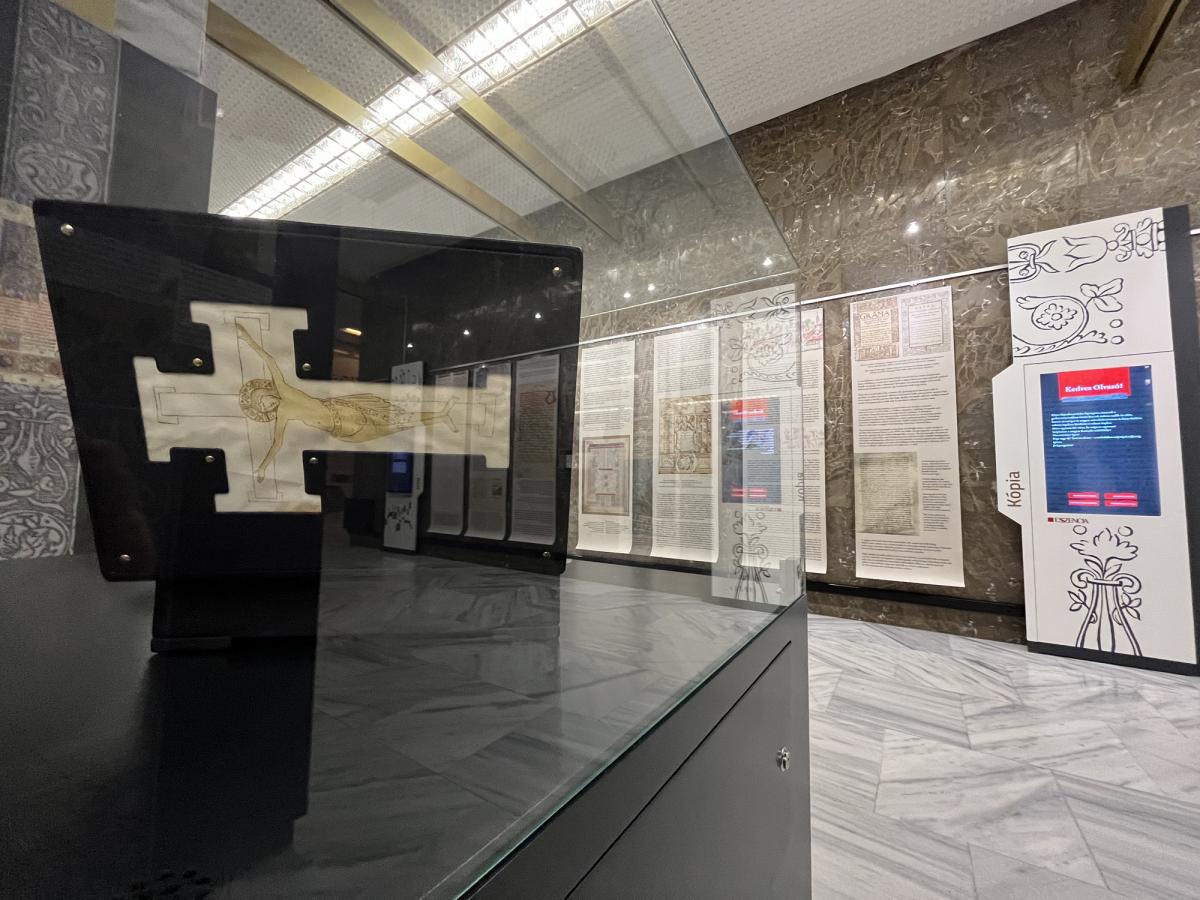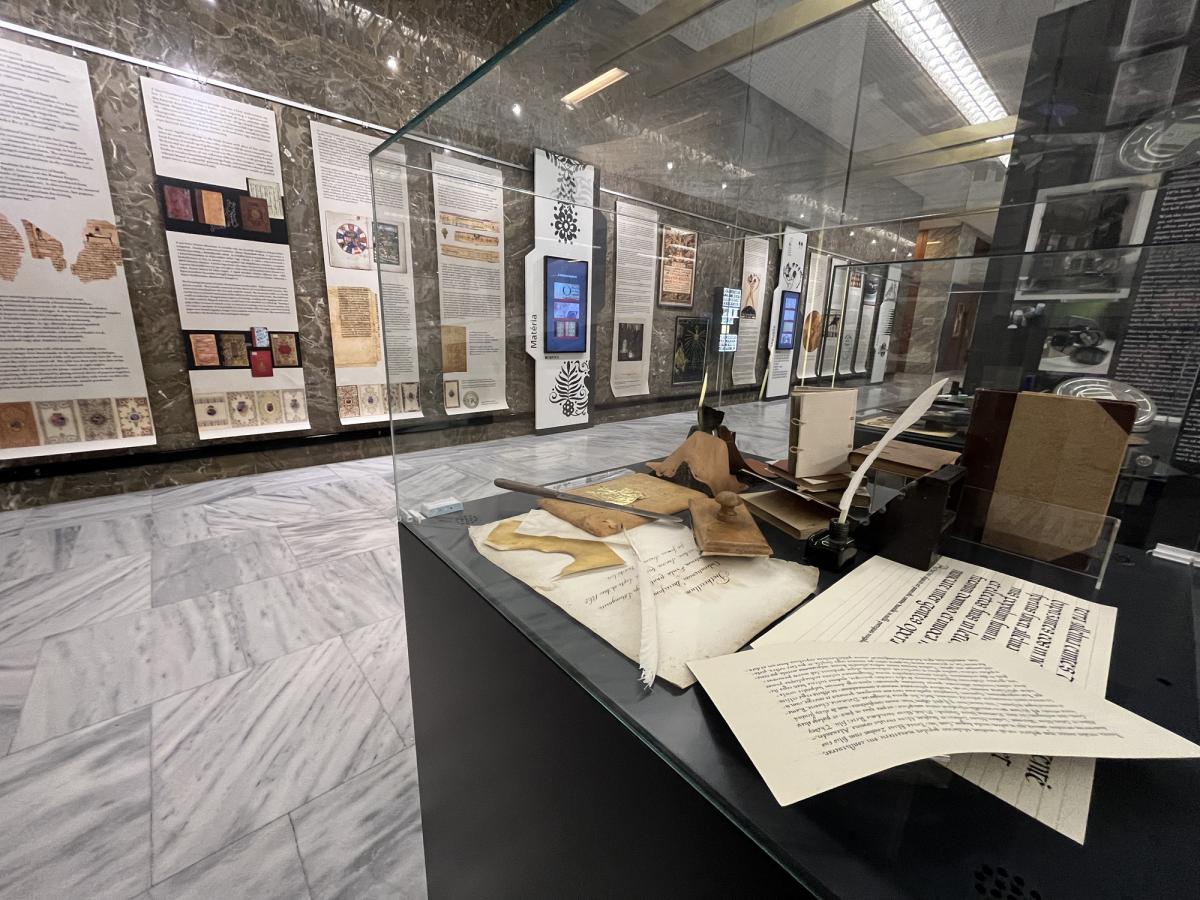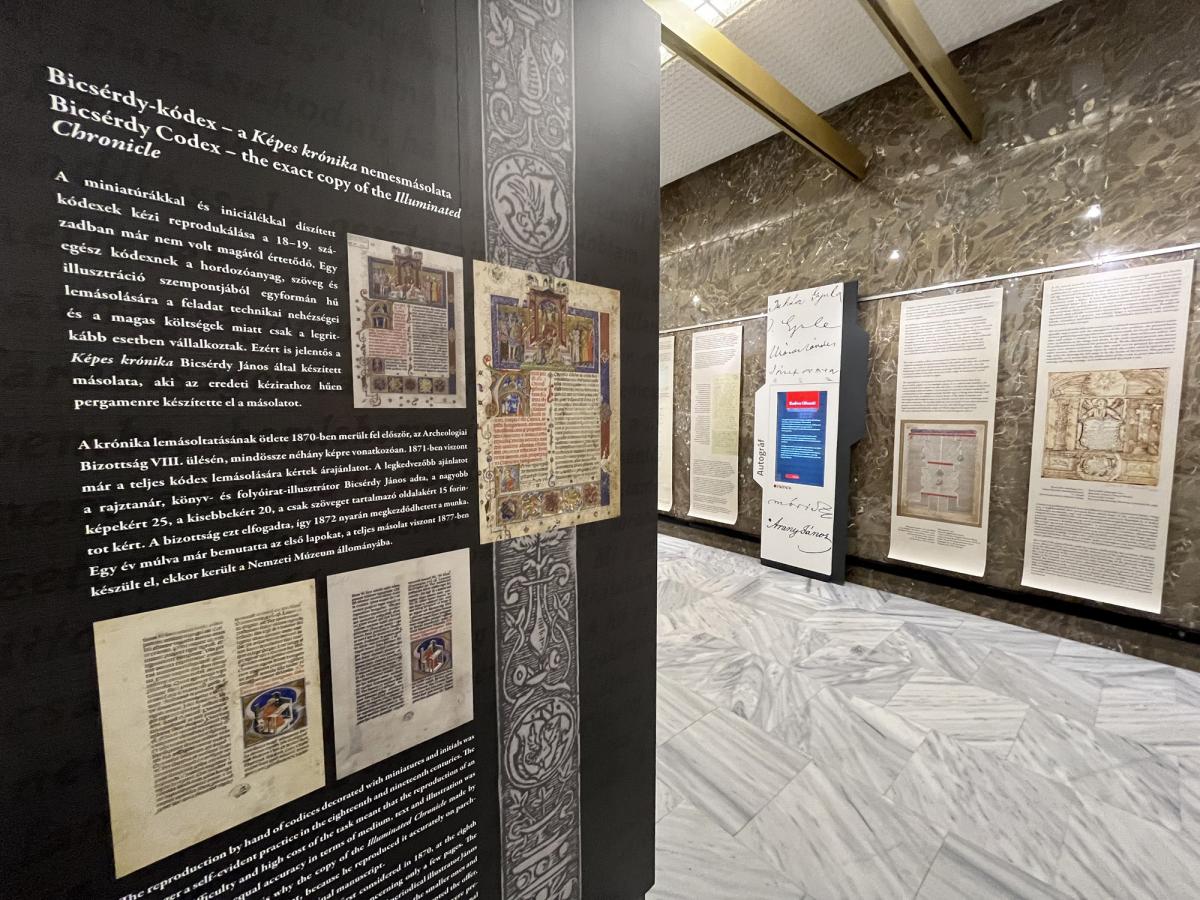
To celebrate the 220th anniversary of the founding of our library, the first comprehensive permanent exhibition, entitled Essence, was opened
The first major permanent exhibition, Essence, was dedicated to celebrate the 220th anniversary of the founding of our library in 2022. Paying tribute to the founder, Count Ferenc Széchényi, and recalling the Corvina Library as a historical predecessor, the permanent exhibition is recommended for all ages in Hungarian and English, presenting the complexity and multi-layered nature of the more than ten million documents in the library, and representing the full range of the written Hungarian cultural heritage.

To celebrate the founding of the NSZL, a new exhibition in Hungarian and English was opened in the building of the national library, paying tribute to the foundation of the library and its founder, Count Ferenc Széchényi, and also recalling the Corvina Library, which can be considered a historical predecessor, and presenting the complexity and multi-layered nature of the more than ten million documents, representing the totality of the written Hungarian cultural heritage. Narrated on the walls, in the exhibition cases and through the touchscreens, several exhibition sections, independently interpretable, highlight a theme or aspect. The exhibition, of interest to families, students, and all ages, occupies two floors of the building.
At the main entrance, visitors are greeted by portraits of Matthias Corvinus and Ferenc Széchényi featuring quotations from them, showing that the national library could have developed from the royal library, as it happened in the history of many other European nations, had Matthias Corvinus’s famous Corvina Library not been destroyed or dispersed during the years of Ottoman occupation.
At the end of the 18th century, Count Ferenc Széchényi transformed his private library into a Hungarika collection, thus laying the foundations of the Hungarian national library and defining its main area of collection. The foundation of the national collection was adjusted to coincide with the feast of Saint Catherine of Alexandria, the patron saint of libraries. The founding charter was signed by Ferenc Széchényi on 25 November 1802 and ratified by Emperor Franz II, King of Hungary, the next day, on 26 November. On entering the building, visitors are greeted by a touchscreen display case with a state-of-the-art visualisation showing some of Ferenc Széchényi’s correspondence related to the founding. The Count wrote nearly seven hundred letters to the political, ecclesiastical, and academic elite of the time, informing them of the founding of the national library. His letters were accompanied by the first volumes of the library’s catalogue, printed at his own expense. The visualisation, based on a selection of the complete correspondence, focuses on Ferenc Széchényi, surrounded by the 100 best-known and most interesting addressees, and features a creative installation of copies of Széchényi’s response letters in the display case.
The multipart exhibition, which spans community spaces, is also linked to our Land of Poems exhibition, opened on 15 March 2022, which is based around the manuscripts of the Hymn, the Appeal and the National Song from our collection. Next to the entrance to the exhibition, we are re-installing an artefact purchased and donated in 1853 by English ladies and gentlemen to Lajos Kossuth, who in the first years of his emigration – on his tour of England in the autumn of 1851 – delivered highly successful speeches and impressed the English public with his oratorical talent and his command of the language. The ‘House of Books’, a mock-up of Shakespeare’s birthplace, contains volumes of the playwright’s works, a reference to the source of Kossuth’s language skills. While the Land of Poems exhibition speaks of Hungarian identity through the three defining poems that have been with us for almost two hundred years, the compilation on the adjacent corridor presents a picture of Hungarian identity and the nationalities that live with us, with travelogues from Count Sándor Apponyi’s Hungarika collection. We will recall the lands of the early modern Kingdom of Hungary based on the experiences of Western European travellers, evoking the texts through which European travellers in the modern age could get to know us Hungarians and the nationalities living with us, and what image of us and what awaited those arriving in the Carpathian Basin.
On the other side of the entrance level, in the buffet corridor, visitors are greeted by a collection inspired by Babits’s bequest, one of the richest Hungarian literary legacies. The mini-exhibition also pays tribute to Sophie Török, who took thousands of photos of Babits, giving posterity an unparalleled collection of documents that provides an insight into the everyday and social life of this outstanding figure of 20th century Hungarian literature. The photographs are accompanied by a selection of manuscripts by the writers and poets they feature.
The area behind the information desk and the surrounding walls display a selection of photos from the history of the library, showing the long past of the library on Múzeum Körút (Museum Boulevard), remembering generations of former colleagues. Taking the main staircase to the next floor of the building, the two large walls opposite each other and the spaces in front of them recall the history of the Corvina Library, while the other commemorates the founding of the library by Count Ferenc Széchényi in 1802 and the acquisition of the collection of Miklós Jankovich, the greatest growth of the first period.
The centrepiece of the ‘undulating’ corvina wall, a unified visual element in front of the so-called Corvina Rooms, is the three upholsteries, now restored, woven in 2006 using the motifs of the corvinas in memory of Matthias’s library. The corvina homage also includes a copy of the famous marble portrait of Matthias and Beatrix. Surrounding them is a picture and text compilation recalling the history of the corvinas, and touchscreens offer further resources on the subject. The space in front of the corvina wall also houses a museum education table. Opposite the Corvina monuments, the centrepiece of the founders’ square is the reconstructed and re-located Széchényi Cabinet. The cabinet, which contains the books of Ferenc Széchényi, was built in the early 2000s. A touchscreen depicting the founder and Miklós Jankovich are placed between the left and right wings of the cabinet, and a copy of a painting of each can be found in a prominent spot in the exhibition space. The founders’ space also houses two large display cases, one of which features a new installation depicting the Széchényi family and the other a reference to Széchényi’s map collection.
The new short films, entitled Guardians, are available on two touchscreens, with the national library staff presenting a collection item of their choice. The one and a half dozen 2-3-minute films on display at the opening of the exhibition will be continuously expanded. The six themes (Autograph, Copy, Code, Material, Visual, Audio), displayed between two spaces facing each other, are installations highlighting different aspects of the collection. In addition to short summaries on the walls, the copies and installations in the exhibition cases and the compilations running on touchscreens allow a better understanding of a particular subject. The Autograph section focuses on manuscripts and manuscript collections written by prominent and anonymous authors, highlighting the many precious individual manuscripts, typescripts and manuscript collections held in the National Library. The exhibition includes several documents relating to Babits’s translation of Dante’s Divine Comedy.
The section on Copies puts the concept of the copy in a broad context, from the works of antiquity that have often survived only in copies, through the fascinating cases of forgery, to the reprography that made possible the dissemination and ‘consumption’ of culture. Here we can see the second decorative facsimile copy of the Pray Codex which contains the Funeral Sermon and Prayer, the first coherent text written in Hungarian.
Under the title Code, we present the basic sign system that carries our culture – from Braille to relief maps – alongside other ‘codes’ from the collection. In the touchscreen display case, the National Library of Foreign Literatures staff represent the diversity of languages (codes) with translations of the Hymn, the Appeal, and the National Song.
Material, the various carriers of information, is the subject of the fourth section. In addition to the presentation of papyrus, parchment and paper, special media such as silk, as well as modern media from the 20th century and today, are also discussed.
In the Visual section, we focus on those documents in our collection that are specifically visual: a wide range of posters, items of applied and fine art, unique and reproduced graphics and photographs, and small prints – from ball invitations to devotional images, calendars and flyers – are displayed in the display cases and on the screen.
The Audio section focuses on the sounds preserved in our library. In addition to the old phonograph on display, visitors can listen to a wide range of audio material, from fragments of speeches by Lajos Kossuth to programmes from Radio Free Europe and the BBC’s Hungarian Broadcasting Service.


